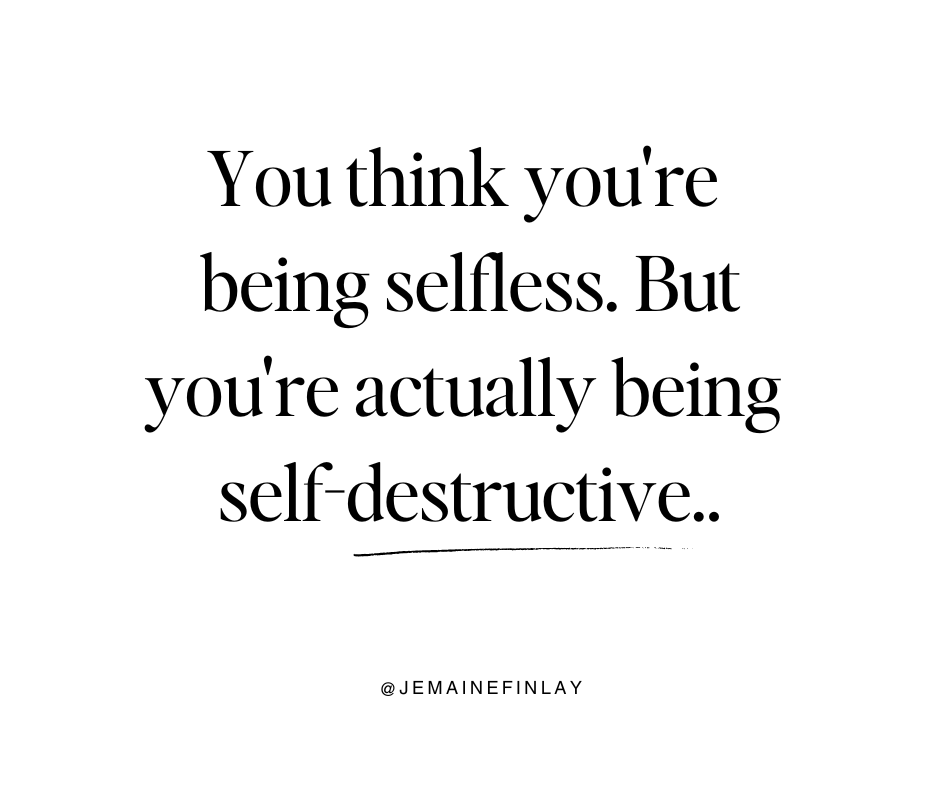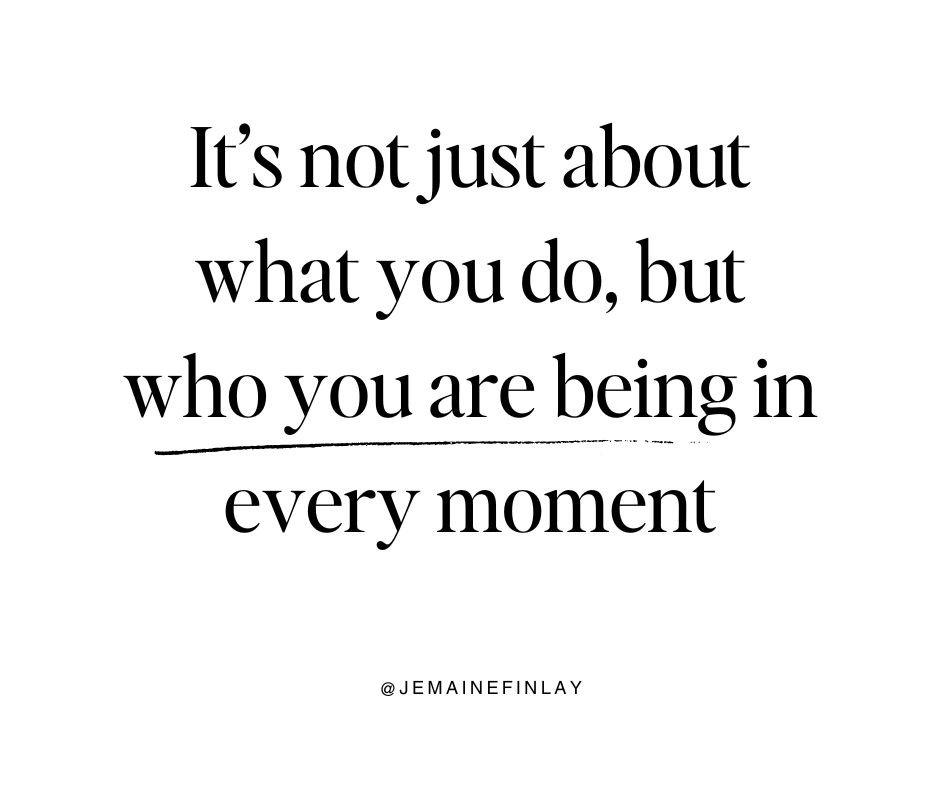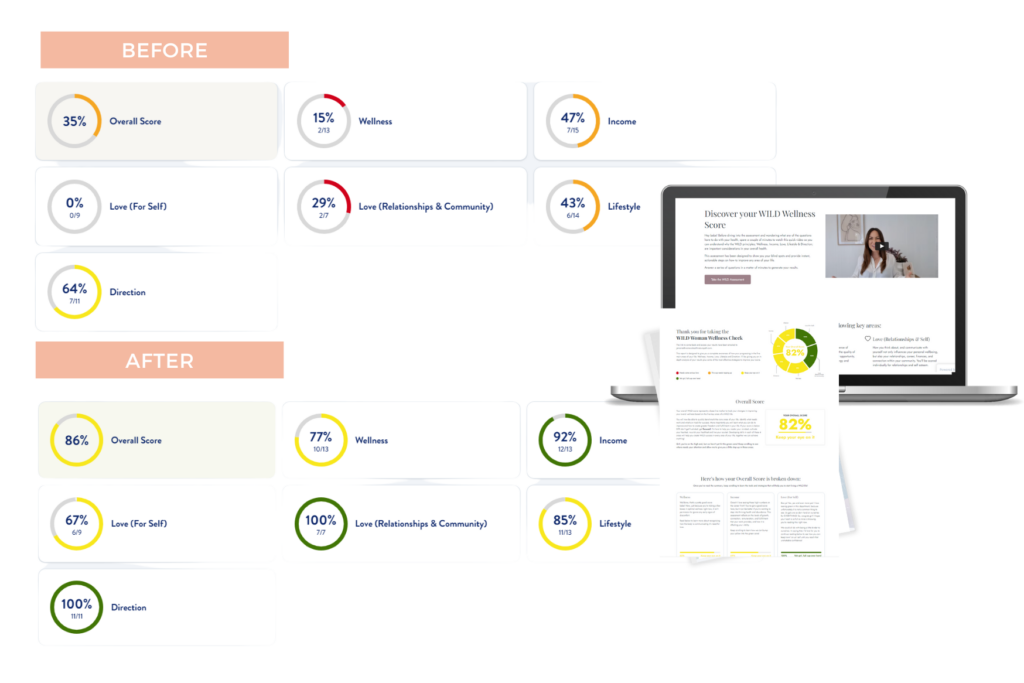Self-neglect is the slowest kind of self-destruction—and most women don’t even see it happening. It hides behind busy schedules, people-pleasing, and the belief that your needs can “wait.” But the longer you ignore yourself, the more your body, mind, and relationships start to break down.
In this article, you’ll uncover the real causes of self-neglect, how to spot the red flags, and the fastest way to reclaim your energy, boundaries, and wellbeing through powerful, science-backed self-care strategies.
What Is Self-Neglect?
Another morning. Another coffee instead of breakfast. Another day putting everyone else’s needs before your own.
You tell yourself it’s temporary. That once the kids are older, once work calms down, once life gets easier, you’ll finally have time for yourself.
But here’s what nobody tells you about self-neglect: It compounds.
Like interest on a debt you never meant to take out, every day you put yourself last adds to a tab that’s silently growing larger. And eventually, your body, your mind, and your relationships will demand payment.
Recent studies show that chronic self-neglect doesn’t just make you tired—it literally rewires your brain for stress, disrupts your hormonal balance, and can shave years off your life.
Women who consistently prioritize others over themselves show measurably higher rates of anxiety, insomnia, digestive issues, and autoimmune conditions.
You think you’re being selfless. But you’re actually being self-destructive.
The woman who “does it all” while her own tank runs empty isn’t a hero—she’s heading for a crash. The kind that affects not just her, but everyone who depends on her.
But what if I told you that reversing this pattern doesn’t require a complete life overhaul? That with the right understanding and a few strategic shifts, you could start feeling the difference in days, not months?
By the end of this article you’ll understand exactly where self-neglect is hiding in your life and have a concrete blueprint to start reversing it—immediately.
Because the cost of waiting is too high. And the solution is simpler than you think.

Why Self-Neglect Happens (& How To Break the Cycle)
Here’s the uncomfortable truth: Women have been conditioned to believe that self-sacrifice equals virtue. That the more you give of yourself, the better person you are.
Society applauds the mother who works full-time, manages the household, and still volunteers for the school fundraiser. We celebrate the woman who never says no, who’s always available, who puts everyone else’s needs before her own.
But this “superwoman syndrome” isn’t strength—it’s a slow-acting poison.
Most women don’t even realize they’re doing it. They’ve been in survival mode for so long that they mistake exhaustion for dedication, overwhelm for productivity, and resentment for love.
They try to “fit in” self-care around the edges—a face mask while the kids watch TV, a quick workout if there’s time, maybe a girls’ night every few months. But these band-aid solutions can’t heal a wound that cuts this deep.
Take Holly, one of my clients. She came to me burnt out, reactive with her kids, and resentful toward her husband who seemed to have unlimited time for his hobbies. She’d tried everything—personal trainers, meal prep, meditation apps, supplements. Nothing worked because she was treating symptoms, not the root cause.
The breakthrough came when she realized that saying “yes” to everyone else was actually saying “no” to herself. Every time she agreed to an extra project, stayed late at work, or skipped lunch to help a friend, she was sending her nervous system a clear message: “My needs don’t matter.” Her body had been keeping score. The chronic stress was showing up as hormone imbalances, digestive issues, and a complete inability to relax— despite being exhausted.
But here’s what changed everything: She stopped viewing self-care as selfish and started seeing self-neglect as irresponsible.
When Holly began honoring her needs—setting boundaries, saying no without elaborate excuses, taking time for herself without guilt—something remarkable happened. She became more present with her children, more connected with her husband, and more effective at work.
This is what I call Radical Reconnection—the process of putting yourself back on your own priority list. Not at the top necessarily, but definitely on the list.
Because when you consistently neglect yourself, you’re not just hurting you. You have a lower stress tolerance and therefore react to your children. Your libido drops and you lose the desire for intimicy with your partner. You’re showing up everywhere as a depleted version of yourself, and everyone suffers.
The most loving thing you can do for the people you care about is to take care of yourself first.

5 Steps To Reverse Self-Neglect Fast
The research is clear: chronic self-neglect accumulates risk for anxiety, depression, autoimmune disorders, and cardiovascular disease. But here’s the good news—the reversal process can start immediately.
The key isn’t massive overhauls that overwhelm an already stretched life. It’s strategic micro-shifts that create momentum and compound over time.
Step 1: The Mirror Moment
You can’t change what you can’t see. Most women have blind spots around their self-neglect because it’s been normalized for so long.
Right now, I want you to imagine you’re watching yourself from above. What patterns would you notice? Where are you unconsciously sacrificing yourself?
Maybe it’s saying yes to social plans when you desperately need rest. Maybe it’s never eating lunch because you’re “too busy.” Maybe it’s staying up late to have “me time” because it’s the only time you have—then feeling exhausted the next day.
One client realized she hadn’t bought herself new clothes in two years while regularly shopping for her family. Another noticed she never sat down to eat—always standing at the counter, scrolling her phone, multitasking even during meals.
The mirror moment is about radical honesty. Where are you disappearing from your own life?
This awareness alone starts shifting the pattern. You begin to catch yourself in the moment and make different choices.
Step 2: Boundary Alchemy
Here’s the script that changes everything: “That doesn’t work for me.”
Not “I can’t.” Not “I’m too busy.” Not a detailed explanation of your entire schedule.
Just: “That doesn’t work for me.”
Boundaries aren’t walls—they’re gates. They determine what gets in and what stays out. But most women feel guilty setting them because they’ve been taught that their value comes from how much they give.
Practice this: The next time someone asks something of you, pause. Take a breath. Check in with yourself. Does this align with your priorities and energy level? If not, use the script.
Watch how much space this creates in your life. Notice how people respect you more, not less, when you have clear boundaries.
Step 3: Nervous System Nourish
When you’re chronically stressed and reactive, your nervous system gets stuck in survival mode. This affects everything—your sleep, your digestion, your ability to think clearly, your patience with loved ones.
Here’s a 3-minute practice that starts rewiring this pattern immediately:
Set a timer for 3 minutes. Sit comfortably and place one hand on your chest, one on your belly. Breathe in for 4 counts, hold for 4, exhale for 6. As you breathe, repeat silently: “I am safe. I am worthy. I matter.”
This isn’t just relaxation—it’s neural rewiring. You’re literally teaching your nervous system that you don’t have to be in constant survival mode.
Do this once in the morning and once before bed. Within a week, you’ll notice you’re less reactive and more present.
Step 4: Permission Practices
Self-neglect often stems from the belief that we don’t deserve care—even from ourselves. Permission practices are small, rebellious acts of self-kindness that rewire this conditioning.
Buy yourself flowers just because. Order the fancy coffee. Take a bath in the middle of the day. Wear your nice clothes on a Tuesday.
These aren’t luxuries—they’re medicine. They’re you practicing believing you’re worth caring for.
Start with one permission practice per week. Notice the resistance that comes up. That’s your old programming being challenged.

Step 5: The Celebration Circuit
Your brain is wired to notice what’s wrong, not what’s right. This keeps you focused on problems instead of progress. The celebration circuit rewires this bias by training your brain to recognize and amplify positive changes.
Every evening, write down three things you did for yourself that day. They can be tiny—drinking an extra glass of water, saying no to something that drained you, taking five deep breaths when stressed.
This practice literally changes your neural pathways. You start noticing opportunities to care for yourself instead of just noticing what you missed.
The cost of self-neglect compounds daily. But so does self-care.
Start with one step today. Choose the one that resonates most strongly. Take action before the resistance kicks in.
Because the woman you become when you stop neglecting yourself doesn’t just benefit you. She becomes a model of what’s possible—for your children, your relationships, your community.
Your radical reconnection starts now.
“The first step towards getting somewhere is to decide that you are not going to stay where you are.”
– J.P. Morgan
Ready to see where self-neglect is hiding in YOUR life?
You’ve just learned about the hidden costs of self-neglect and the steps to reverse it. But here’s the thing—most women have blind spots. Areas where they think they’re doing “fine” but are actually running on empty.
That’s why I created the WILD Woman Scorecard—a comprehensive assessment that looks at the 6 core areas where self-neglect shows up:
- Wellness – Your physical and mental health
- Income – Your career growth and financial wellbeing
- Love (Self) – Your relationship with yourself
- Love (Others) – Your intimate relationships and connections
- Lifestyle – How you’re actually living vs. how you want to live
- Direction – Your sense of purpose and momentum
The scorecard takes just 5 minutes to complete and gives you a personalized report highlighting exactly which buckets are empty (or fast approaching empty), plus specific recommendations and free resources to start filling them back up.

Most women are shocked to discover where their biggest gaps actually are. It’s rarely where they think.
Take the WILD Woman Assessment now:
Your future self will thank you for taking this step today.






Read the Comments +